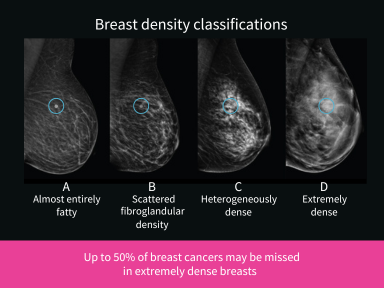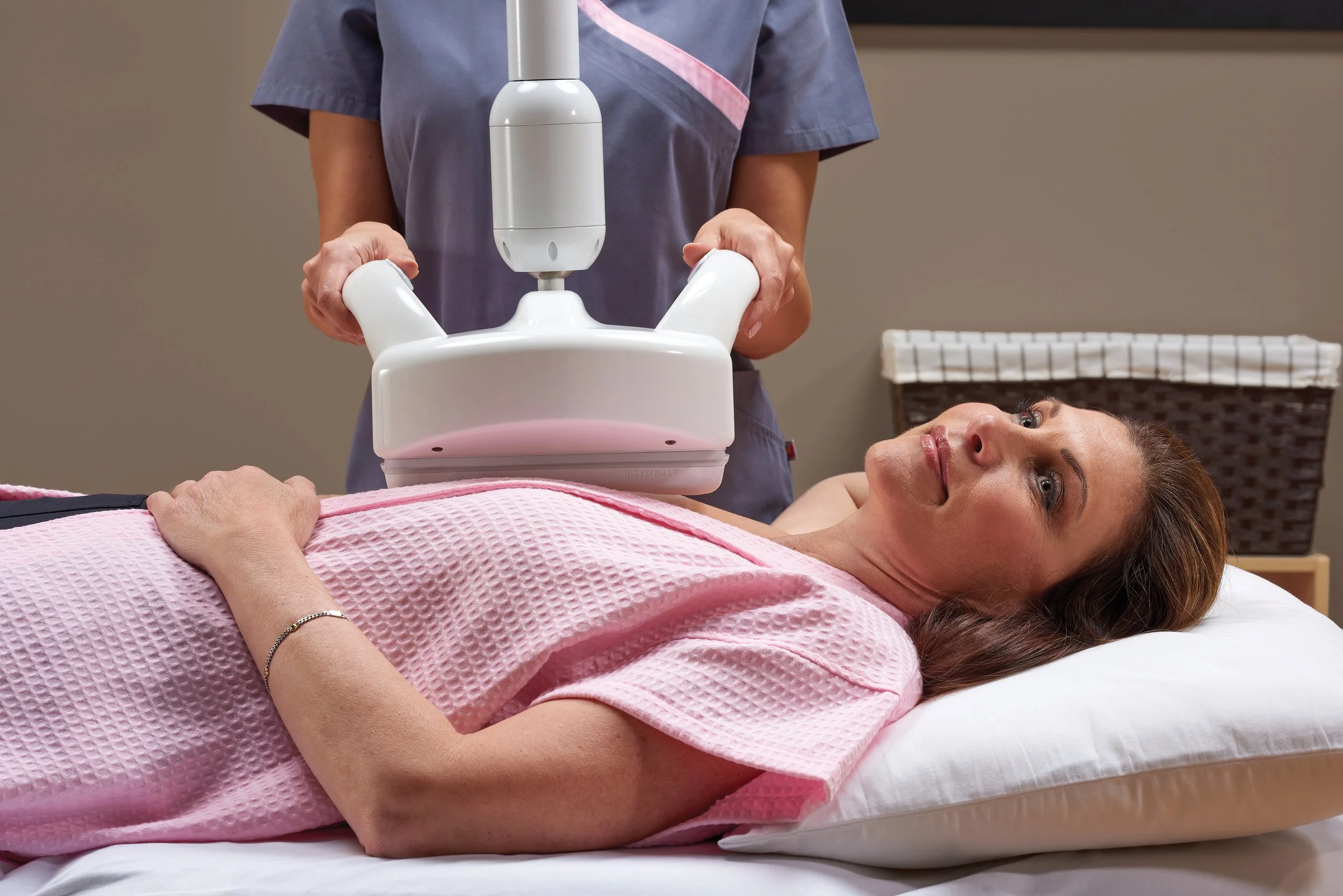
ABUS
(Automated Breast Ultrasound)
BCDC is proud to introduce our Dense Breast Program, designed to provide an enhanced complete breast cancer screening for women with dense breast tissue.
Automated Breast Ultrasound (ABUS)
Should I Have an ABUS Screening Exam?
This breast cancer screening is specifically designed to help detect cancers hidden in dense breast tissue, which can sometimes be missed by mammography alone. The addition of ABUS (Automated Breast Ultrasound) screening alongside mammography has been shown to increase cancer detection rates by 35.7%.
What to Expect
During the approximately 15-minute procedure, a layer of lotion is applied to the breast, and a scanner is gently positioned to acquire images. These high-quality 3D ultrasound images are then reviewed by the radiologist alongside your mammogram, providing a complete evaluation of your dense breast tissue.
How is ABUS Different?
Unlike traditional 2D or 3D mammography, which uses radiation to capture images, the Invenia ABUS 2.0 utilizes sound waves to create clear 3D pictures of your breast tissue. This innovative approach works in conjunction with your regular screening mammogram, offering a more complete assessment for women with dense breasts and helping to detect cancers that might otherwise go unnoticed.
If you have dense breast tissue, the Invenia ABUS 2.0 screening exam can be an essential part of your breast health journey, improving early detection and peace of mind.
A referral from your provider is required for all ABUS screenings. This service is provided in conjunction with your annual mammogram. If you’re unsure whether you have dense breast tissue, our radiologists will determine this during your mammogram, and if you’re a candidate, we can often perform your ABUS scan on the same day.
If you’ve previously had a mammogram with BCDC and are due, we can also schedule your ABUS screening on the same day, as long as you have a referral and meet the eligibility criteria. For women under 40, eligibility requires a 20% or higher score on the Tyrer-Cuzick Lifetime Risk Assessment, which must be completed with your provider before scheduling.
Breast density refers to the amount of tissue compared to fat in the breast. There are four categories of density: A (mostly fatty), B (scattered fibroglandular tissue), C (heterogeneously dense), and D (extremely dense). Categories C and D are considered dense, and about 40% of women (and 70% of Asian women) fall into these groups. Dense tissue increases breast cancer risk by 4-6 times and makes mammograms harder to read since both dense tissue and cancer appear white—like finding a snowball in a snowstorm. Supplemental screening, such as Automated Breast Ultrasound (ABUS), can help detect cancers in dense breasts. The only way to know your breast density is through a mammogram, so regular screenings are essential.
Understanding Dense Breast Tissue
How Do I Schedule?







